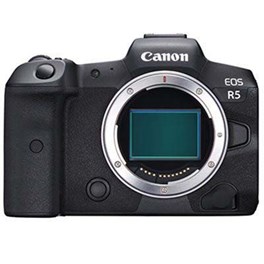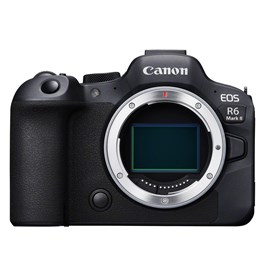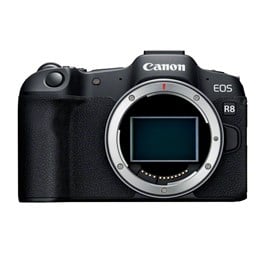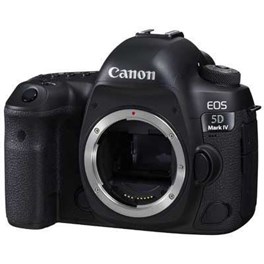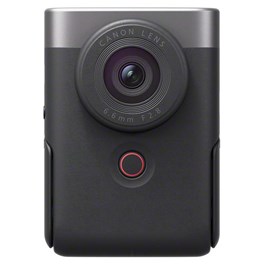
Canon, deservedly, is one of the most well-known names in photography and video. Its ranges of mirrorless, DSLRs, cinema cameras, camcorders, compacts and specialist cameras have won awards, not to mention legions of fans, and if you want one of the best imaging setups in the business, the Canon ecosystem is a tremendous place to start.
At Wex our team regularly test and review the latest Canon gear, on the site and on our YouTube channel. The cameras on this list are ones that have particularly impressed us. We’ve not just picked the fancy pro stuff – we also have included plenty of Canon’s entry-level cameras, as this area is in fact one of the firm’s real strengths.
Amateur, professional, enthusiast, or all three – you’ll find a great Canon camera here for you. We’ve divided our list into categories to make it easier to navigate, and have included a fair, honest assessment of the pros and cons of each camera, so you know what you’re getting into.
Quick Navigation
Best Canon Mirrorless Camera
Canon’s flagship EOS R mirrorless range is currently the jewel in the crown. Throughout the series there are cameras for every user, including beginner-friendly options with budget prices, and professional-grade cameras on the cutting edge, and everything in between. We’ve picked a few of our favourites here, but more mirrorless models show up throughout the other categories on this list.
We’re exclusively covering Canon’s EOS R series throughout this guide, including both full-frame and APS-C models. Some of the finest, most spectacular cameras ever made are on this list, as well as some highly capable (arguably underrated) all-rounders that would make a perfect purchase for any committed photo or video enthusiast.
Canon EOS R5 Mark II Digital Camera Body
Half price Lexar memory card
The Canon EOS R5 Mark II sets a new standard for visual storytelling with industry-leading technology for hybrid creators. It combines a revolutionary 45MP back-illuminated stacked sensor with DIGIC Accelerator technology, rapid speeds of up to 30fps, and 8K60P RAW video recording to deliver a genre-defying mirrorless body that will help professionals achieve their most creative ambitions yet.
£4,499.00 View
The Canon R5 II takes centre stage. The R5 was good. But the R5 II... they've really stepped things up several notches. The core of this camera is the “accelerated capture” architecture, featuring a dual processor setup with the new DIGIC Accelerator and DIGIC X processors. This combination, along with deep-learning AI algorithms, enables the camera to upscale its 45MP resolution to 180MP, allowing for detailed cropping without quality loss. The R5 II also features a stacked, back-illuminated sensor for faster readout, improved IBIS offering up to 8.5 stops of compensation, and a high-resolution viewfinder.
One of the big things here is the AI-powered Subject-Detection and “Action Priority” features that revolutionise focus accuracy for dynamic subjects. Eye Control AF, which tracks eye movements in the viewfinder, further improves focus precision. For video, the camera supports 8K 60p RAW and 4K at 120p and 60p, with various recording formats and professional audio options. A key feature is simultaneous recording, capturing photos and videos at the same time on separate cards, ideal for photojournalists and sports photographers.
Canon EOS R5 Digital Camera Body
Free 3LT Tripod worth £300
Truly shaking up the market, the Canon EOS R5 is packed with new technology and major improvements that sets it aside from its competitors. The Canon R body has been designed for professional photographers and videographers alike, allowing you to elevate your practice to the next level. It's been equipped with an all-new 45MP CMOS Image Sensor & DIGIC X Processor that is capable of incredibly detailed 45MP stills and 8K video footage. Combining Canon's Dual Pixel CMOS AF system and a blisteringly fast 20fps mechanical shutter, you'll be able to accurately capture every moment of the action with precision. Then, there is a game-changing new addition which is a Canon first: The R5 is the very first Canon camera body to feature a 5-Axis IBIS system that is compatible with the RF and EF optically stabilised lenses; producing shake-free and smooth video footage. It's a true marvel of the photographic world.
£3,649.00 View
Pros:
- Amazing 8K video
- Sublime high-res stills
- Effective 5-axis stabilisation
Cons:
- Short recording times
The Canon EOS R5 is a truly monumental achievement in video and photo technology alike. Pairing a 45MP CMOS image sensor with the DIGIC X processor, the EOS R5 can capture 8K footage in pristine detail, using the full width of its full-frame sensor, and also sports useful features like dual card slots (including CFExpress) and a top native ISO of 51,200.
Also, this camera marked the first time Canon incorporated its five-axis image stabilisation technology into an EOS R body. This means footage can be captured smoothly on the move, and it’s easier to obtain sharp stills in poor light conditions (by use of slower shutter speeds than would otherwise be possible). However, video shooters should be aware that there are some strict time limits to video recording with the R5 due to potential overheating, not only when shooting 8K but also 4K at any frame rate higher than 30p. If this would be an issue for you, consider the Canon EOS R5 C, a more video-focused variation of this camera without recording time limits.
Canon EOS R6 Mark II Digital Camera Body
Raising the already high bar set by its predecessor, the Canon EOS R6 Mark II Digital Camera Body blends world-class performance with super-fast speed and unparalleled filmmaking features. A powerful 24.2-megapixel sensor can continuously shoot at 40fps, and can also record oversampled 4K 60p video or even 6K RAW. With other quality-of-life upgrades, shoot whatever you want however you like.
£1,999.00 View
Pros:
- Incredibly capable autofocus
- Highly effective stabilisation works in tandem with lens IS
- Dual UHS-II SD card slots
Cons:
- Some rolling shutter under certain conditions
- Otherwise, not many!
There’s a case to be made that the Canon EOS R6 Mark II is one of the best digital cameras for enthusiasts ever made. It’s definitely priced at the upper end for non-professionals, but if it fits your budget, you’ll find an utterly superb camera for pretty much anything. Its Dual Pixel CMOS AF II system simply gets the job done in any situation; its 24.2MP full-frame sensor produces brilliant, vibrant images; and its stabilisation system can be paired with a stabilised RF-mount lens to deliver a whopping eight stops of effective compensation.
The EOS R6 Mark II boasts two slots for fast UHS-II SD cards [https://www.wexphotovideo.com/secure-digital/] – a more affordable format than CFExpress, but still fast enough to keep up. Video-wise, it captures great-looking 4K using the full width of its sensor – no cropping here. You can even up that to 6K ProRes if you pair the EOS R6 Mark II with an external recorder.
Canon EOS R8 Digital Camera Body
Canon’s EOS R8 is designed for hybrid shooters looking to expand their creative territory and bask in the benefits of full-frame outside the studio. With a 24.2 megapixel full-frame CMOS sensor, the renowned Dual Pixel CMOS AF II system, excellent low-light performance and oversampled 4K up to 60 fps, this lightweight camera packs some heavyweight features into one compact, yet powerful package.
£1,189.00 View
Pros:
- Superb hybrid photo/video feature set
- Amazingly light for a full-frame model
- Weather-resistant design
Cons:
- Single card slot
- No stabilisation
A wunderkind at stills and video alike, the Canon EOS R8 is an impressively specced camera when you consider the fact that it weighs just 461g. It’s designed as a kind of “step-up” camera for users who are looking to upgrade to full-frame, and as such it’s one of the more affordable full-frame models in Canon’s line-up. It blends high-quality stills shooting with impressive speeds – 30fps in raw is nothing to sneeze at – and there’s also a solid video spec. It can shoot 4K video at 60p, and there’s also the Canon Log3 profile for maximising dynamic range.
Granted, a few sacrifices have been made to keep the camera so light. There’s only one card slot, which could prove an issue on an intense shoot, and there’s no in-body stabilisation system, meaning you’ll need to rely on lens-based IS.
Best Canon DSLR Camera
Canon knows what it’s talking about when it comes to DSLRs. Over the years it has been responsible for some of the most iconic DSLR cameras ever made. From the EOS 5D series, which famously caused a mini revolution in filmmaking, to the sporty speedster EOS-1D X series, Canon has made its mark on the photography world with some absolutely superb DSLRs.
While mirrorless is more in vogue these days, many photographers still prefer DSLRs for their optical viewfinders, rugged bodies and long battery life. The Canon EF lens line is also one of the most extensive in the business, replete with Canon-made and third-party lenses alike at a range of different prices. While DSLRs also crop up in some of the other categories on this page, here we’ve highlighted two in particular that deserve your consideration.
Canon EOS 5D Mark IV Digital SLR Camera Body
The Canon EOS 5D Mark IV Digital SLR Camera Body offers a 30-megapixel CMOS sensor with a maximum ISO sensitivity of 32,000, and an expanded 61-point AF-system. Capture magnificent detail even in the toughest conditions as the camera body features a weather-resistant design. Users can enjoy beautiful 4K video recording at 30 fps; whereas, HD video can be captured at 120 fps when trying to achieve a slow-motion effect. In addition to this, WiFi and NFC connectivity are also available allowing for easy file transfer and more.
£2,299.00 View
Pros:
- High-quality 4K video
- EF-mount provides loads of lenses
- Excellent full-frame image quality
Cons:
- Relatively minimal upgrade over predecessor
The EOS 5D series of DSLRs basically revolutionised filmmaking in the 2000s, and the series’ most recent and likely last model upholds that fine tradition. It produces high-quality 4K video at 30fps and can shoot Full HD video at 120fps for super slow motion.
Having the full-frame sensor and the EF mount gives you access to the huge range of Canon lenses, meaning practically any imaging vision can be realised, and it’s of course no slouch for stills either, boasting the ability to shoot at a maximum ISO sensitivity of ISO 32,000. For real hybrid shooting, it can even extract 8MP stills from 4K video, allowing you to effectively shoot both at once.
Bear in mind this camera was a fairly incremental upgrade over its predecessor, the EOS 5D Mark III. So, if it’s out of your budget, it’s worth checking out our Used section to see if any of the older cameras are available at a cheaper price.
Canon EOS 90D Digital SLR Camera Body
The Canon EOS 90D comes as the upgrade to the popular Canon 80D. The 80D became a go to camera for both professionals and amateurs because it was such a versatile system, so this upgrade is sure to impress any level of photographer. It features a larger 32.5 megapixels APS-C imaging sensor that will produce some incredible detailed photographs and video footage. Like the 80D, the 90D has been designed for speed; catering to sports and wildlife photographers - Or anyone who has fast moving subjects. It's also capable or capturing some stunning 4K footage and of course, features Canon's EF-S mount, meaning there are a huge range of compatible lenses for you to choose from. Take a look at the impressive list of features this camera has!
£1,299.00 View
Pros:
- Blends the best of DSLRs and mirrorless
- Sophisticated video features
Cons:
- Only one card slot
For a DSLR that’s a little more affordable, it's worth taking a look at Canon’s APS-C range. The EOS 90D is a prime example, boasting a 32.5MP sensor that produces superb images, aided by an autofocus system with 45 cross-type points, rendering it super-fast and accurate, even in low light – speaking of which, the ISO tops out at a respectable 25,600.
Video-wise, the EOS 90D can shoot in glorious 4K, and also benefits from such professional features as a microphone input, allowing you to significantly improve the sound of your video to professional levels. The bright, intelligent optical viewfinder is another feather in this camera’s cap, delivering a useful, clear view that’s comfortable to use for long periods. Whatever you’re shooting, the EOS 90D will deliver a sublime experience.
Bear in mind there are a few premium-camera features that are missing or slightly below-par here. The most pressing of these, we'd have to say, is the lack of dual card slots; given the high volumes of data you'll be working through when shooting video and stills, putting all that on one card is a lot to ask.
Best Canon Camera for Beginners
All this technical talk flying over your head? Canon is, for our money, offers some of the best systems around for beginner photographers and videographers. Its DSLR and mirrorless ranges include multiple entry-level options, it has plenty of affordable lenses, and many of its cameras come with handy guided modes to help new users get the best out of them.
There are beginner options in Canon’s mirrorless and DSLR lines. And, for those who just want a camera for fun, Canon also offers some knockabout instant-print cameras that can spit out physical copies of images – great for families and parties alike. In this section, we’ve selected some Canon cameras that are particularly suited to beginner shooters, whether you’re a novice who’s keen to learn, or just someone who wants to have fun snapping pictures.
Canon EOS R100 Digital Camera Body
Bring special moments to life and create long-lasting memories with the Canon EOS R100. With a simple guided interface and creative assist tools for controlling parameters, this camera helps users maximise results, capturing every shot in detail-rich clarity thanks to its 24.1 MP APS-C sensor, high-performing Digic 8 processor and Dual Pixel CMOS autofocusing with Face+ tracking and eye detection.
£509.00 View
Pros:
- Affordable entry-point for EOS R series
- Excellent image quality
- User-friendly interface
Cons:
- No touchscreen
The Canon EOS R100 is the cheapest EOS R camera you can currently buy. Essentially, it’s a replacement for Canon’s popular beginner DSLRs, designed for photography students and newbies, and it fulfils that function brilliantly. While it doesn’t offer as many features as the more expensive options, it still has that winning 24.2MP APS-C sensor – so you’re still getting great image quality, even from a beginner body.
Benefiting from Dual Pixel CMOS autofocus across 88% of the frame, the EOS R100 is a pretty credible camera when it comes to moving subjects. If you want to shoot discreetly, you can activate Silent Mode, and there are also some useful Hybrid Auto modes to help guide you to the best settings for any given shooting situation. You can also connect it to your smart device via the built-in Wi-Fi or Bluetooth connection options, which is a great way to play around with remote shutter triggering.
Pros:
- Features beginner-friendly guide modes
- Big selection of affordable EF lenses
- Lightweight for a DSLR
Cons:
- Somewhat dated autofocus system
Still one of the best beginner DSLRs you can buy, the Canon EOS 250D is a mainstay of photography intro courses – and why shouldn’t it be? Its intuitive control layout offers a great platform for learning the ropes on, and having the EF-S lens mount gives you a nice big selection of affordable lenses to pair it with. It produces excellent images with its APS-C sensor, and there’s even a vari-angle touchscreen.
Unlike some other DSLRs, the EOS 250D is actually arguably better when you’re composing with the screen, as opposed to the optical viewfinder. This is because when you’re using the screen, you can take advantage of its capable Live View autofocus system, rather than the somewhat dated 9-point system that kicks in when you’re using the viewfinder. In either case, this probably isn’t a camera you’d use to capture professional sporting events, but for the price, it’s excellent, and would make for a great “first real camera” for pretty much any novice shooter.
Canon Zoemini S2 Instant Camera and Printer - Rose Gold
The Canon Zoemini S2 Instant Camera and Printer has been redesigned with content creators in mind. The innovative 2-in-1 camera printing device that allows users to filter selfies, choose between shooting modes and save their favourite photos to print later. With added Bluetooth connectivity, creatives can shoot, style and share stories on socials to capture the best of all those mini moments.
£109.00 View
Pros:
- Instant physical prints of images
- Extremely easy to use and fun
- SD memory card slot
Cons:
- Only 8MP resolution
- No manual settings control
And now, for something completely different (well, mostly different). The Canon Zoemini S2 is one of Canon’s instant print cameras. Exactly as they sound, these clever little point-and-shoots are capable of spitting out a physical print of your image within seconds of pressing the shutter. They use Canon’s Zink (zero-ink) paper to create sticky-back prints about the size of a credit card.
The 8MP files are also recorded digitally to an SD card. While the camera doesn’t offer any kind of settings control, it’s extremely simple to use, and is therefore ideal for families and children. You can also use the Bluetooth connectivity to connect it to Canon’s Mini Print app, which gives you extra customisation options such as the ability to add text and stickers. Weighing just 188g, this is a camera that’s easy to carry everywhere with you – it’s excellent for making memories at parties and on holidays.
Best Canon Camera for Video
From kickstarting the Hollywood DSLR revolution to expanding its impressive line of pro cine cameras, Canon has very much made its mark in the video space. Vloggers, filmmakers, documentarians and streamers can all find something suitable for their purposes in the various Canon lines, with options to suit all budgets.
We’ve mostly stayed away from the ultra-expensive stuff in this section, and have confined our picks to cameras that will most likely be useful to a majority of prospective video shooters. If you do want something more high-end, the EOS R5 in our mirrorless section is a good choice, as is the EOS 5D Mark IV in our DSLR section. Pro video users, meanwhile, will want to look at the Canon Cinema range.
Canon PowerShot G7 X Mark III Digital Camera - Silver
The Canon PowerShot G7 X Mark III allows users to create content that defies expectations and surpasses what you're used to seeing from your smartphone. Incredible 4K video, sumptuous 20.1-megapixel photos and high-speed shooting that stops fleeting moments in time. Please note: This is the silver version of this camera.
£749.00 View
Pros:
- Livestreaming capability
- Solid all-in-one video package
Cons:
- 10-minute 4K limit
- Lens a little soft at points
One of the most popular cameras for vloggers, the Canon PowerShot G7 X Mark III is an all-in-one compact that offers loads of great video features without skimping on stills. Producing 4K movies and offering a mic input and a tilt-up screen that makes it easy to self-shoot, the G7 X Mark III also can make use of its Bluetooth and Wi-Fi connectivity to livestream movies directly to online platforms like Facebook, Twitch or YouTube. The 20.1MP sensor ensures gorgeous, dynamic results no matter what you’re shooting.
In terms of downsides, naturally using a compact camera rather than an interchangeable-lens system does limit you in terms of versatility. There's a little softness at the wide end of the G7 X Mark III's lens, and it's also worth being aware that 4K shooting is capped at ten minutes.
Canon Legria HF G70 Camcorder
The Canon Legria HF G70 is a handheld camcorder designed to be a multipurpose tool. The 1/2.3-inch CMOS sensor captures gorgeous 4K footage which can be Over Sampled into HD formats. The 20x optical zoom lens has 5-axis image stabilisation so footage is always clear and steady. With a 3.5-inch touchscreen display and other quality-of-life features, this is a powerfully versatile camcorder.
£1,089.00 View
Pros:
- Stabilised 20x optical zoom lens
- Consistently good-quality 4K video footage
- Relatively easy to use
Cons:
- Not weatherproof
If you’re only looking to shoot video and have no interest in stills, then a Canon camcorder could be a better buy than a DSLR or mirrorless camera. The Canon Legria HF G70 is a good choice – an all-in-one model with a 20x zoom lens that makes use of a 5-axis optical stabilisation system for super-smooth footage. The Legria HF G70 can capture 4K UHD 150Mbps at 25p, and features a 3.5mm microphone jack input in addition to its built-in mic.
Weighing in at 740g, the camera is light enough to be operated one-handed. While it’s not weatherproof, its feature-set make it well-suited to run ‘n’ gun shooting, and it doesn’t do too badly in low light thanks to an f/1.8-2.8 maximum aperture on its lens. The camcorder also benefits from some of Canon’s autofocus advancements, including Face Detection AF and Face Tracking.
Canon PowerShot V10 Advanced Vlogging Kit - Silver
The Canon Powershot V10 is the perfect next step for creators looking to elevate their content and stand out online. With an all-new innovative design, the Powershot V10 is a pocket-sized vlogging powerhouse, combining a 19mm wide-angle lens with 4K video capture, digital IS, stereo sound recording, and a built-in foldable stand to provide users with the means for studio-quality content on the go.
£339.00 View
Pros:
- Palm-sized design is a natural fit for vlogging
- Built-in stand
- Records good-looking 4K 30p video
Cons:
- MicroSD storage can hamper recording times
- Lens is easy to smudge
After the traditional format of compact camera began to wane in popularity, Canon went back to the drawing board with its PowerShot range. It started to produce interesting, specialised cameras designed to excel at specific functions rather than being generalists. And so, the PowerShot V10.
It’s a vlogging camera – but more so. Lots of cameras are billed as “vlogging specialists” these days, but the V10 is specifically designed to be comfortably held in the palm of the hand for self-filming. It’s a much more natural fit than trying to hold a conventional camera in one hand and point it at yourself – and the V10 also has a built-in kickstand, meaning you don’t need to mount it to a tripod to go hands-free.
The 4K 30p video it produces looks great – however, it’s a good idea to pick up a high-spec microSD card [https://www.wexphotovideo.com/microsd-cards/] to ensure the camera can keep up. Otherwise, you can find yourself struggling against limited recording times.
Best Canon Camera for Travel
Plenty of Canon cameras are lightweight, portable and capable – which is great news if you’re looking for something travel-friendly. Travel photography is all about balancing your needs with what’s sensible to pack – you may want an all-in-one compact camera for ease, however a mirrorless camera with a selection of small lenses can give you much greater versatility.
As such, we’ve given you a little of both in this final section. Remember that there’s plenty of overlap between categories, and other cameras that have already featured could easily have earned a place here, such as the ultra-light full-frame EOS R8, or the nippy PowerShot G7 X Mark III compact camera.
Canon EOS R10 Digital Camera Body
As an entry-level camera, the Canon EOS R10 is the perfect next step in your photography career. Whether you’re moving on from a smartphone or upgrading your DSLR, the EOS R10 provides greater room for creativity with features like 23/30fps bursts, a Dual Pixel CMOS autofocus II system, AF tracking, 4K UHD Video Recording, a powerful DIGIC X Processor and more – the only limit is your imagination.
£999.00 View
Pros:
- Versatile, capable APS-C mirrorless camera
- Fast burst and reliable focusing
Cons:
- No in-body stabilisation
- 4K video comes with a crop
The Canon EOS R10 sits at a spot in the EOS R lineup that makes it ideal for travelling photographers. As an APS-C camera, it’s both lighter and more affordable than the big full-frame boys – however, it comes with a suite of tasty features that make it versatile and capable. Its autofocus is whip-fast, as is its burst rate – switch to the silent electronic shutter and you can go as fast as 30fps! It also comes equipped with a number of dedicated shooting modes, like Panoramic Shot for capturing sweeping vistas.
The autofocus also benefits from Canon’s deep-learning system. This means it has automatic subject recognition, and can lock onto people, animals and vehicles with impressive accuracy. There’s a wide selection of lenses available, especially if you’ve got the budget for an EF-EOS R adapter – looking for a lens with built-in stabilisation might be a good idea, as the EOS R10 lacks a built-in stabilising system of its own.
Canon PowerShot Zoom Essential Kit - Black
This pocket-size super zoom camera offers an expansive 100mm or 400mm focal length, as well as a 2x digital zoom to expand the range to an incredible 800mm. With the capacity to record full-HD video and 12.1 MP still-images, the Canon PowerShot Zoom is ideal for outdoor adventures, wildlife enthusiasts, bird watchers, and family days out. Implements key image stabilisation and USB charging.
£289.00 View
Pros:
- Incredible zoom in a pocketable format
- Build around optical stabiliser
- Weighs just 145g
Cons:
- Limited resolution / video quality
- Battery charger not included
Another example of Canon retooling its PowerShot range into highly specialist cameras, the PowerShot Zoom is a rather interesting little number. It’s essentially the biggest possible zoom in the smallest possible format, designed for wildlife enthusiasts, birdwatchers and anyone else who’d benefit from being able to see (and record) things that are a long way away. Its tiny dimensions make it also a good choice for travel.
Its optical zoom lens extends to an equivalent of 400mm, and with the Digital Zoom functionality, this can be extended to an equivalent of 800mm! Helping make this useable is a built-in 4-axis optical stabilisation system, which means you can leave the tripod at home. The PowerShot Zoom records stills at 12.1MP and video in Full HD – not the highest resolutions, but sufficient for recording clear imagery of any wildlife you spot. It’s great for hikes and days out – but can also be a good companion for sporting events, especially if you’re seated all the way out in the nosebleeds. This versatility is what makes it a worthy travel companion.

FAQs
How do I update the firmware on my Canon camera?
Updating your firmware is easy. To update the firmware on your Canon camera, visit the Canon website and find the support section. Find your camera model and download the latest firmware update file. Follow the instructions provided by Canon to install the firmware update onto your camera.
What lenses are compatible with my Canon camera?
Canon DSLR cameras use the EF or EF-S lens mount. EF lenses are compatible with both full-frame and APS-C sensor cameras, while EF-S lenses are designed specifically for APS-C sensor cameras. Additionally, Canon's mirrorless cameras use the RF lens mount. Be sure to check your camera's lens mount specifications before purchasing a lens.
How should I clean my Canon camera sensor?
If you decide to clean your sensor yourself, you must take extreme care. Use a blower to remove loose dust particles, then use a sensor cleaning swab and cleaning solution specifically designed for camera sensors. Follow the manufacturer's instructions carefully to avoid damaging the sensor.
How do I choose the right Canon camera for my needs?
You need to consider several factors such as your budget, type of photography (e.g., travel, portraits, sports), features (e.g., resolution, autofocus capabilities, video recording), and future upgrade paths. Research different models, read reviews, and if possible, try out cameras in person to find the best fit for your requirements. You can always visit one of our many stores for guidance and to try out any cameras.
How do we decide?
Our in-house photography experts, store staff and partners all work collaboratively to pour over these guides. The cameras and equipment recommended in our guides are based on their personal opinion, empirical experience and of course, feedback from our customers. We way up price, features, quality and the all-important 'je ne sais quoi' to make sure we recommend products that will delight and inspire.
If you would like more advice on any purchase our contact centre staff are here to help. Alternatively, you can reach us via email or social media. And don't forget. If you were to purchase anything based on our recommendations you'll be covered by our full returns policy

